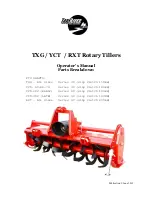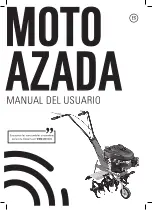
FORM 150.72-NM1 (1020)
119
JOHNSON CONTROLS
6
Commissioning of this unit should only
be carried out by Johnson Controls
Authorized personnel.
Commissioning personnel should be thoroughly familiar
with the information contained in this literature, in
addition to this section.
Perform the commissioning using the detailed checks
outlined in the
“Equipment Pre-Startup and Startup
Check List”
(Page 120) as the commissioning procedure
is carried out.
PREPARATION – POWER OFF
The following basic checks should be made with the
customer power to the unit switched OFF.
Inspection
Inspect unit for installation damage. If found, take action
and/or repair as appropriate.
Refrigerant Charge
Packaged units are normally shipped as standard with a
full refrigerant operating charge. Check that refrigerant
pressure is present in both systems and that no leaks are
apparent. If no pressure is present, a leak test must be
undertaken, the leak(s) located and repaired. Remote
systems and units are supplied with a nitrogen holding
charge. These systems must be evacuated with a suitable
vacuum pump/recovery unit as appropriate to below
500 microns.
Do not liquid charge with static water in the cooler.
Care must also be taken to liquid charge slowly to avoid
excessive thermal stress at the charging point. Once the
vacuum is broken, charge into the condenser coils with
the full operating charge as given in the Technical Data
Section.
Service and Oil Line Valves
Open each compressor suction, economizer, and
discharge service valve. If valves are of the back-seat
type, open them fully (counterclockwise) then close one
turn of the stem to ensure operating pressure is fed to
pressure transducers. Open the liquid line service valve
and oil return line ball valve fully in each system.
Compressor Oil
To add oil to a circuit – connect a YORK hand oil pump
(Part No. 470-10654-000) to the 1/4” oil charging
connection on the compressors with a length of clean
hose or copper line, but do not tighten the flare nut.
Using clean oil of the correct type (“V” oil), pump oil
until all air has been purged from the hose then tighten
the nut. Stroke the oil pump to add oil to the oil system.
Approximately 1.8 to 2.3 gallons is present in the each
refrigerant system. Oil levels in the oil equalizing line
sight glass should be between the bottom and the middle
of the sight glass with the system off. High oil levels
may cause excessive oil carryover in the system. High
oil concentration in the system may cause nuisance trips
resulting from incorrect readings on the level sensor
and temperature sensors. Temperature sensor errors
may result in poor liquid control and resultant liquid
overfeed and subsequent damage to the compressor.
While running, a visible sign of oil splashing in the
sight glass is normal.
Fans
Check that all fans are free to rotate and are not damaged.
Ensure blades are at the same height when rotated.
Ensure fan guards are securely fixed.
Isolation / Protection
Verify all sources of electrical supply to the unit are taken
from a single point of isolation. Check that the maximum
recommended fuse sizes given in the Technical Data
Section has not been exceeded.
Control Panel
Check the panel to see that it is free of foreign materials
(wire, metal chips, etc.) and clean out if required.
Power Connections
Check that the customer power cables are connected
correctly to the terminal blocks or optional circuit
breaker. Ensure that connections of power cables within
the panels to the circuit breaker or terminal blocks are
tight.
Grounding
Verify that the unit’s protective ground terminal(s) are
properly connected to a suitable grounding point. Ensure
that all unit internal ground connections are tight.
Supply Voltage
Verify that the site voltage supply corresponds to the
unit requirement and is within the limits given in the
Technical Data Section.
SECTION 6 – COMMISSIONING
Summary of Contents for YORK Tempo YLAA Series
Page 4: ...JOHNSON CONTROLS 4 FORM 150 72 NM1 1020 THIS PAGE INTENTIONALLY LEFT BLANK...
Page 12: ...JOHNSON CONTROLS 12 FORM 150 72 NM1 1020 THIS PAGE INTENTIONALLY LEFT BLANK...
Page 14: ...JOHNSON CONTROLS 14 FORM 150 72 NM1 1020 THIS PAGE INTENTIONALLY LEFT BLANK...
Page 18: ...JOHNSON CONTROLS 18 FORM 150 72 NM1 1020 THIS PAGE INTENTIONALLY LEFT BLANK...
Page 36: ...JOHNSON CONTROLS 36 FORM 150 72 NM1 1020 THIS PAGE INTENTIONALLY LEFT BLANK...
Page 49: ...FORM 150 72 NM1 1020 49 JOHNSON CONTROLS THIS PAGE INTENTIONALLY LEFT BLANK...
Page 71: ...FORM 150 72 NM1 1020 71 JOHNSON CONTROLS THIS PAGE INTENTIONALLY LEFT BLANK...
Page 73: ...FORM 150 72 NM1 1020 73 JOHNSON CONTROLS 5 5...
Page 75: ...FORM 150 72 NM1 1020 75 JOHNSON CONTROLS 5 5...
Page 77: ...FORM 150 72 NM1 1020 77 JOHNSON CONTROLS 5 5...
Page 79: ...FORM 150 72 NM1 1020 79 JOHNSON CONTROLS 5 5...
Page 81: ...FORM 150 72 NM1 1020 81 JOHNSON CONTROLS 5 5...
Page 83: ...FORM 150 72 NM1 1020 83 JOHNSON CONTROLS 5 5...
Page 85: ...FORM 150 72 NM1 1020 85 JOHNSON CONTROLS 5 5 LD13901...
Page 87: ...FORM 150 72 NM1 1020 87 JOHNSON CONTROLS 5 5...
Page 89: ...FORM 150 72 NM1 1020 89 JOHNSON CONTROLS 5 5 LD13232...
Page 91: ...FORM 150 72 NM1 1020 91 JOHNSON CONTROLS THIS PAGE INTENTIONALLY LEFT BLANK...
Page 92: ...JOHNSON CONTROLS 92 FORM 150 72 NM1 1020 Technical Data WIRING LD13238 FIG 22 WIRING...
Page 93: ...FORM 150 72 NM1 1020 93 JOHNSON CONTROLS 5 5 LD13239...
Page 176: ...JOHNSON CONTROLS 176 FORM 150 72 NM1 1020 THIS PAGE INTENTIONALLY LEFT BLANK...
Page 191: ...FORM 150 72 NM1 1020 191 JOHNSON CONTROLS 10 NOTES...
















































